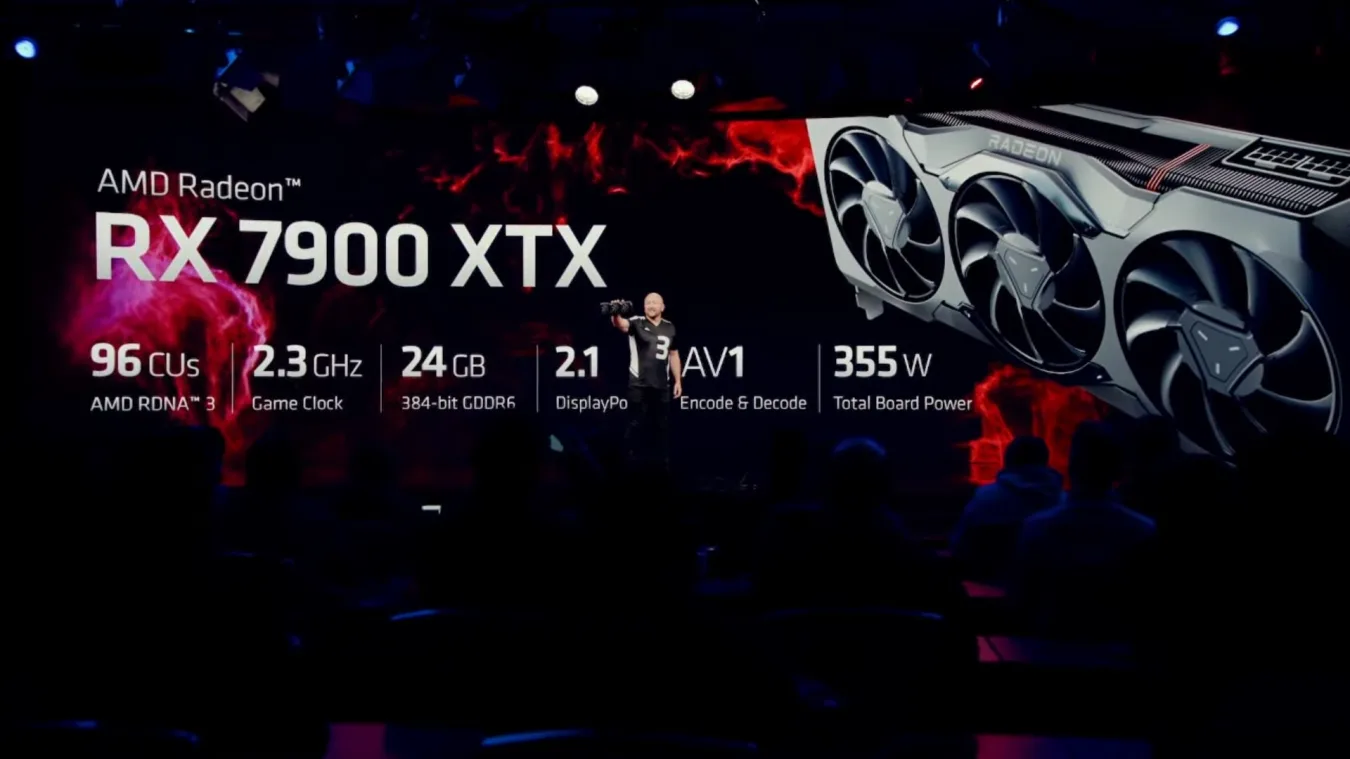Now that NVIDIA has kicked off the latest video card wave with the insanely powerful RTX 4090, all eyes are on AMD to see how it will respond. Today, the company announced the Radeon RX 7900 XTX and RX 7900 XT, two confusingly named GPUs powered by its new RDNA 3 architecture. On stage during its Las Vegas launch event, AMD CEO Dr. Lisa Su claimed the new hardware offers a 54 percent increase in performance per watt over the previous GPUs. She also emphasized that AMD is focused on delivering complex performance with reasonable power usage, a clear knock against NVIDIA's power-hungry (and PSU cable-melting) RTX 4090.
And, as is typical for AMD, it's also trying to undercut its main competitor in pricing. The Radeon RX 7900 XTX will sell for $999, while the RX 7900 XT will go for $899. Both cards will launch on December 13th. That's far more reasonable than the $1,599 RTX 4090 and $1,199 RTX 4080.
These cards aren't just a mere spec bump. Su says RDNA 3 is the world's first chiplet-based GPU, giving it a modular design that can be easily tweaked down the line. Currently, those chiplets include a 5nm GPU compute die and a 6nm memory cache die. It's capable of reaching up to 61 teraflops of computing power (up from a maximum of 23 TFLOPs in RDNA 2), can manage up to 24GB of GDDR6 RAM and consists of 58 billion transistors.

AMD
Naturally, the flagship Radeon RX 7900 XTX gets the full 24GB of RAM, while the 7900 XT will ship with 20GB. Both cards look similar to AMD's last-gen hardware, albeit with bigger fans and a sleeker heatsink design. AMD SVP Sam Naffziger also joked that you won't need any new power cables for these cards — you should be able to drop them into your existing system.
When it comes to ray tracing, historically one of AMD's weakpoints, the company says the new cards have a next-generation accelerator with 50 percent more performance per compute unit. They'll offer 1.5 times more rays in flight, new dedicated instruction and upgraded ray box sorting. Hopefully, that means we'll see closer ray tracing parity with NVIDIA's cards. The Radeon 7000 GPUs also feature AMD's new Radiance Display Engine, with support for 480Hz 4K gaming and 165Hz 8K performance. (And yes, the latter sounds like a stretch to us, as well.)
So what do these cards look like on paper? In addition to its massive 24GB of GDDR6 RAM, the RX 7900 XTX features 96 compute units running at up to 2.3GHz, all with a 355-watt power draw. The 7900 XT, meanwhile, sports 84 CUs, a 2GHz clock speed and a 300 watt power draw, alongside its 20GB of GDDR6 memory. AMD has also partnered with companies like Samsung for DisplayPort 2.1 monitor, which should arrive early next year. Surprisingly, Samsung offered up a juicy tidbit: Its new Odyssey Neo G9 monitor will offer an 8K ultrawide resolution. (The better question is should anyone be aiming for 8K gaming at all.)
As for gaming performance, AMD says the RX 7900 XTX reached up to 295fps while playing Apex Legends in 4K, and up to 704fps in Valorant. Given that the refresh rate limit of DisplayPort 1.4 is 240Hz, that's a lot of performance today's monitors won't even register. AMD also claims its GPUs are seeing up to 96fps in Assassin's Creed Valhalla with Fidelity FX Super Resolution (FSR).
Notably missing, of course, is any comparison to NVIDIA's RTX 4090. Perhaps AMD just didn't have time to benchmark that card, but it'll be interesting to see just how competitive the RDNA 3 GPUs will be.
All products recommended by Engadget are selected by our editorial team, independent of our parent company. Some of our stories include affiliate links. If you buy something through one of these links, we may earn an affiliate commission. All prices are correct at the time of publishing.
Article From & Read More ( AMD's first RDNA 3 GPUs are the Radeon RX 7900 XTX and 7900 XT - Engadget )https://ift.tt/fFPcS5X
Technology

No comments:
Post a Comment